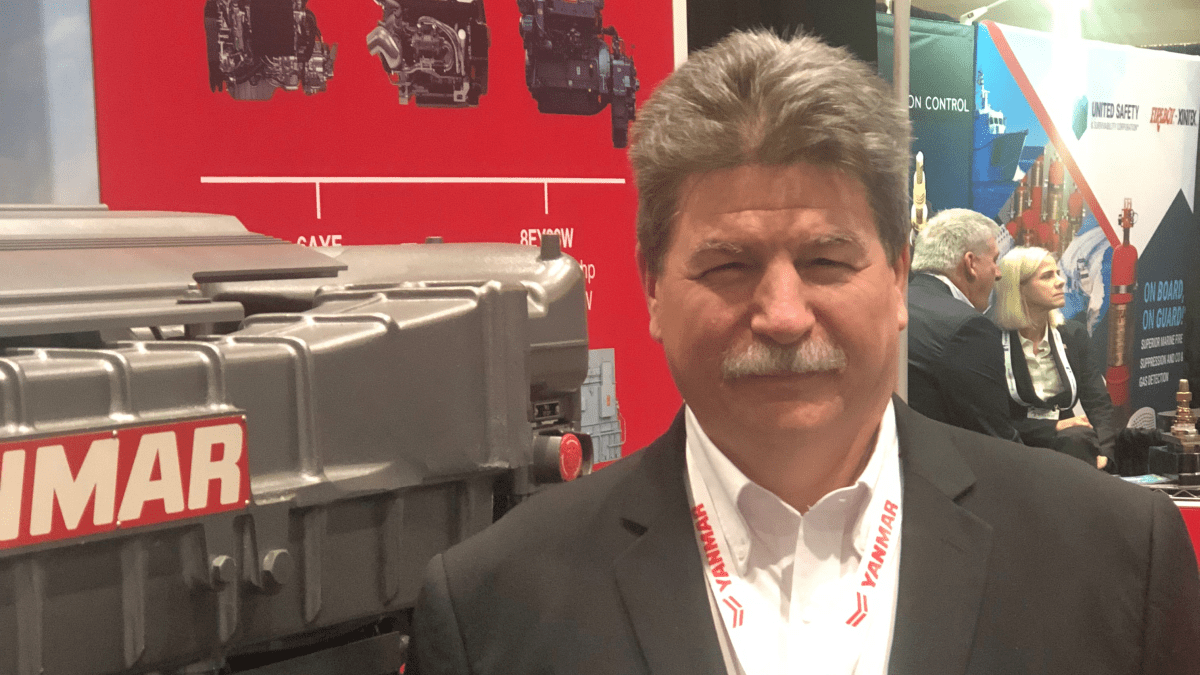Yanmar is moving on several fronts to support vessel owners’ decarbonisation pathways, with dual-fuel engines, hydrogen fuel cells and electrification
Methanol is increasingly gaining traction among vessel owners to underpin shipping’s decarbonisation pathway to 2050 and beyond. It is one of the alternative fuels that is a primary focus of marine engine development at Yanmar, according to Yanmar America power solutions division manager Carl Micu.
“We already have LNG dual-fuel engines available in our medium-speed engine line, and methanol is under development now,” said Mr Micu, speaking to Marine Propulsion at the International Workboat Show in early December.
As an alternative fuel, methanol offers the advantages of immediate reductions of CO2, SOx and NOx emissions, with simple handling and wide availability. Additionally, potential decarbonisation pathways are offered to vessel owners using blue methanol (which uses carbon capture technology), biomethanol made from biomass and e-methanol produced from captured CO2 and hydrogen using renewable electricity.
Methanol, however, is not without its design and operational hurdles. “What is the structure that you are going to have inside the engine [to handle] those type of pressures? Where are you going to get the storage on the vessel [for the fuel]?” Mr Micu noted. Methanol has a lower energy content than traditional marine fuels, requiring about twice as much volume for the equivalent energy.
“Potential decarbonisation pathways are offered to vessel owners using blue methanol, biomethanol and e-methanol”
As a low-flashpoint fuel, methanol vaporises and mixes with air to form a flammable mixture at the relatively low flashpoint of 11˚C. This brings into focus the risk of fire.
Methanol, however, is a widely traded commodity, with a number of existing regulations and guidelines to manage and mitigate the risk of fire and enable its safe transport. Additionally, the IGC Code provides for the safe transport of low-flashpoint liquids such as methanol, and also addresses its use as a marine fuel.
Hydrogen fuel cell tested
Yanmar is not limiting its development scope to internal combustion engines. Mr Micu said a hydrogen fuel-cell package “should be going to test in a production-type environment next year.”
Working with partner Toyota, Yanmar conducted a field demonstration test of marinised hydrogen fuel-cell modules, based on technology used in the automaker’s Mirai midsize car. The 200-kW system was installed into Yanmar’s EX38A FC pleasure boat for field testing. The enginebuilder plans to scale up the technology for larger vessels by 2025.
“For the inland waterways in the US, there is the 20-litre 6AYA M and 6AYA E, the mechanical and electronic versions of the same engine, and for outside the US, the 6EY17, which is a popular choice for tugboats in Brazil,” said Mr Micu. The 6EY17 is both IMO Tier II and IMO Tier III certified, while 6AYEM-ET engines are EPA Tier 3, IMO Tier II and IMO Tier III (with SCR) compliant.
Hybrid-electric applications are also on Yanmar’s radar. We have purchased a battery company called Eleo out in the Netherlands,” said Mr Micu. “We will use that to leverage the move into electrification. Hybrid in the marine industry, depending on the operation, makes sense. Pure electrification makes perfect sense for point-to-point operations,” he added.






